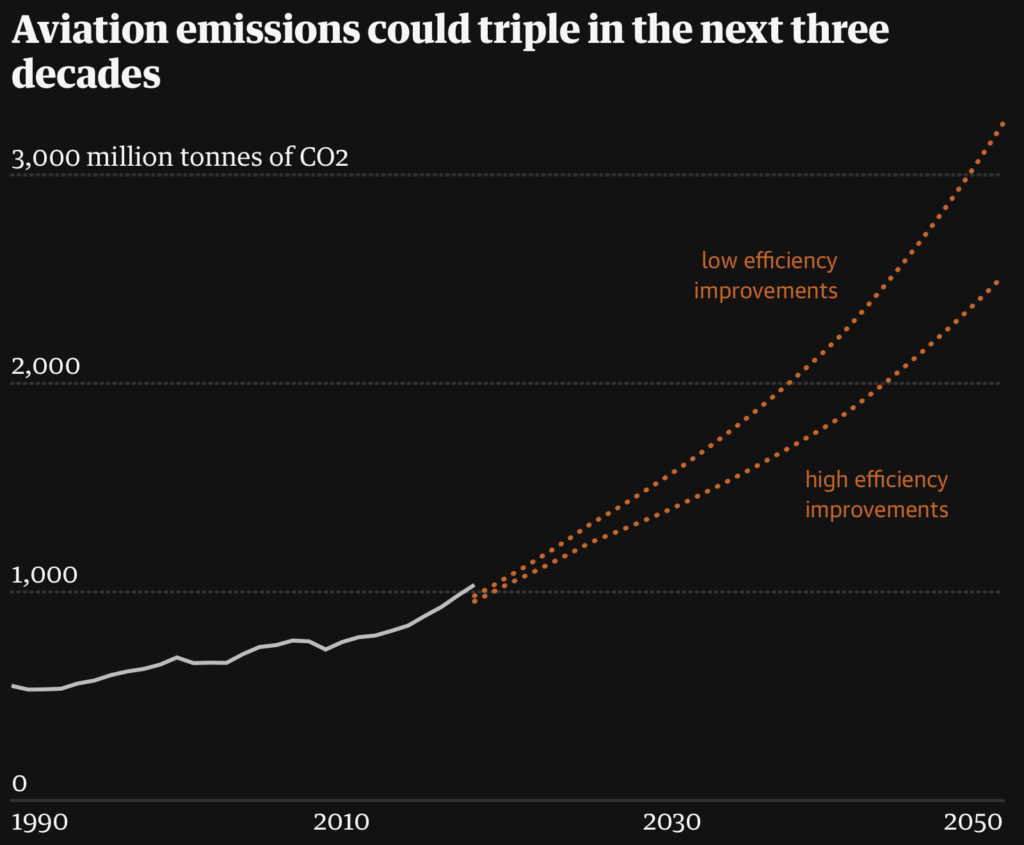The days of guilt-free flying are over – How to fix the climate impact of airline travel
The days of guilt-free flying are over - How to fix the climate impact of airline travel

Climate change has changed forever the way we view flying. The first thought goes like this: airplanes burn fossil fuels, which creates carbon dioxide (CO2), the main greenhouse gas causing climate change. However, things are a little more complicated. Besides CO2, aircrafts generate ozone and methane. They form condensation trails (contrails), and may increase high-altitude cirrus clouds. All these combined, contribute to global warming and the cumulative effect of flying an airplane at altitude is twice as bad as burning the same amount of fossil fuel at ground level.
It is worth noting this fact, as the world’s policy, science and industry leaders gather in this year’s COP27 at Sharm El Sheikh, Egypt. According to atmosfair, one person’s return flight on Economy Class from different airport hubs of the world to the idyllic resort town on the Red Sea has the following carbon footprint:
Frankfurt to Sharm El Sheikh: 1,721 kg CO2
San Fransisco to Sharm El Sheikh: 8,955 kg CO2
Toronto to Sharm El Sheikh: 6,289 kg CO2
Rio de Janeiro to Sharm El Sheikh: 6,656 kg CO2
Melbourne to Sharm El Sheikh: 10,198 kg CO2
Shanghai to Sharm El Sheikh: 5,182 kg CO2
Singapore to Sharm El Sheikh: 4,973 kg CO2
New Delhi to Sharm El Sheikh: 2,197 kg CO2
Johannesburg to Sharm El Sheikh: 3,546 kg CO2
These figures are averages, taking into account which aircraft models are typically used on flight routes, as well as the estimated occupancy of seats on board those planes. They include only the CO2 generated by burning jet fuel, not any emissions connected to the construction of the airplane itself. And there is something else: a first class ticket on a long-haul flight emits, on average, four times as much as an economy seat. This is because more expensive seats take up more space and weight on the plane. First and business class also tend to end up with more empty seats.
One might ask: is this a lot? Just to put things into perspective, driving a middle class car for a year (12,000 km) generates 2,000 kg CO2. And the per capita annual CO2 emissions of a person in Bangladesh is 600kg. In fact, there are 37 countries -from Ethiopia in Africa to Nepal in Asia- where the average person emits even less CO2 in a whole year.

Last month, the International Civil Aviation Organization (ICAO) -the UN body responsible for limiting the carbon footprint from international air travel- adopted a long-term aviation climate goal of net zero carbon emissions by 2050. In recent years, the air transportation industry has faced growing pressure to deal with its outsized role in the climate crisis. Currently responsible for up to 3 percent of global CO2 emissions, the sector’s switch to renewable fuels is proving difficult, even if the aeronautics industry and energy companies are seeking progress. According to airlines, it will require investments of $1.5 billion between 2021 and 2050 to decarbonize aviation.
The challenge is massive, considering that air transportation is projected to add to the atmosphere three times more carbon by that year. This only means one thing: we cannot rely on the aviation industry to do our offsetting for us. Every time we take a flight, just as every time we drive the car or leave our computer screen on, we have to be responsible for our own carbon emissions.

This is particularly relevant to the games industry, which attends an average of over 265 tracked events every year. Hundreds of thousands of industry actors and gamers flock into these events, putting a significant burden to our warming planet. Our Travel & Restore programme helps to mitigate this, enabling companies and individuals to stand up to the challenge, by offsetting carbon emissions connected to their traveling.
Get in touch today, to get an estimate of your CO2 footprint and more information about how you can make a very real contribution towards forest restoration.